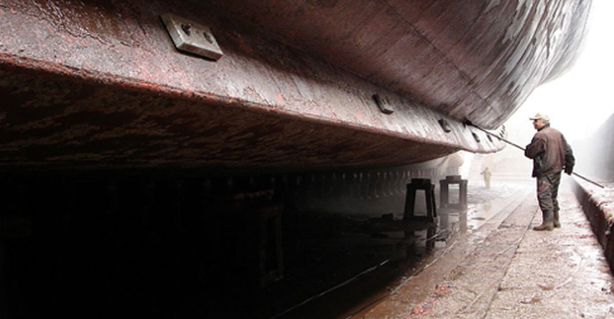
Zinc coating being used for an efficient solution for Marine and Offshore corrosion prevention and cathodic protection…The hull of a ship is the watertight body that is exposed to water. To protect the hulls, the ship builders put pieces of Zinc on these hulls. The Zinc components used on ships are called “Sacrificial Anodes”. Sacrificial Anodes are linked electrically to the ship’s hull. They are made of metals more reactive than the material used for the ship’s body and systems. As such, they shield the ship’s body and systems while the ship stays protected, giving rise to the name ‘Sacrificial Anodes’. Zinc is used because it has a higher voltage in the water so the current is more inclined to flow from it than from the propeller. To complete the electrical circuit, Zinc components are connected to the items they are intended to protect. Zinc is bolted right to the shaft or underwater housing.
Non-metal boats usually have a copper bonding wire inside, that connects all the underwater metal items together so they all share the protection from Zinc Anodes. Zinc Sacrificial Anodes are also used for subsea structures, pipelines, wind turbine foundations, wave and tidal generators, quay and harbour walls, jetties, dock gates, water storage tanks. Using Sacrificial Anodes gives a multitude of benefits like: capacity to last and provide effective Cathodic Protection for up to 25 years, no maintenance requirement, very high reliability, no hull penetrations, zero risk of interference and lower overall life cycle cost.






